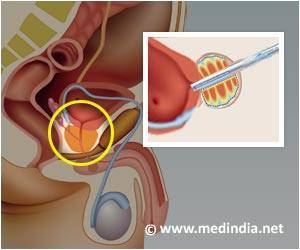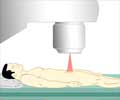Prostate cancer, just like all other cancers, is a silent disease, claiming thousands of lives around the world every year. Cancer is among the scariest and dreaded diseases, considering the treatment options one has to consider after being diagnosed with cancer.
Chemotherapy and radiation therapy are usually related to baldness, while surgery is feared by almost all. In such a scenario, a new mode of treatment, preferably minimally invasive and having lesser side effects is needed. Enter active surveillance, the new breakthrough in the field of prostate cancer treatment. Read below to know more about this new treatment mode, and how it can help and treat patients suffering from prostate cancer.The ‘watchful waiting’: Prostate tumors have a habit of progressing slowly, leading to late diagnosis. It may present certain symptoms like impotence, urinary problems and bowel ailments, but most of these problems tend to be shunned off and ignored. When diagnosed with prostate cancer in the early stages, watchful waiting can be effective.
This type of management is usually needed to closely monitor the progression of the tumor and to help decide the treatment based on the changes in symptoms.
Active surveillance methods: Active surveillance, a relatively new treatment option for cancer patients includes a number of small tests and procedures to check the progression of the tumor more carefully. Active surveillance techniques may make use of rectal exams and tests, PSA (prostate specific antigen) blood tests and ultrasounds. Sometimes biopsy may also be required to check if the tumor is getting more aggressive.
Rebecka Godtman, a doctoral student from the Jonas Hugosson Academy, University of Gutenburg, explains the determination of the type of therapy to be used for the specific patient, based on the results from these lab tests. Progressive tumors may need to undergo radiation therapy or surgery; however, many men can totally avoid or delay the adverse effects occurring after these treatments by active surveillance methods.
A study conducted in the Sahlgrenska Academy, University of Gothenburg, analyzed 1000 men suffering from prostate cancer. Of the 1000 men, only 46% agreed to use active surveillance as their treatment strategy. The results obtained after the treatment showed that around 63% of the men who considered active surveillance as a treatment kept using it for their follow-up period, extending to as far as 15 years.
Any risk factors? Though the treatment itself doesn’t have any side effects as such, but if continued for long, it can risk the progression of the tumor. Furthermore, the PSA test done as a part of the treatment isn’t reliable, as some cancers spread even before the PSA levels increase.
The final verdict: Since this treatment is a relatively new treatment option, active surveillance needs to be considered among low risk patients rather than high risk ones.
Source-Medindia









![Prostate Specific Antigen [PSA] Prostate Specific Antigen [PSA]](https://www.medindia.net/images/common/patientinfo/120_100/prostate-specific-antigen.jpg)





